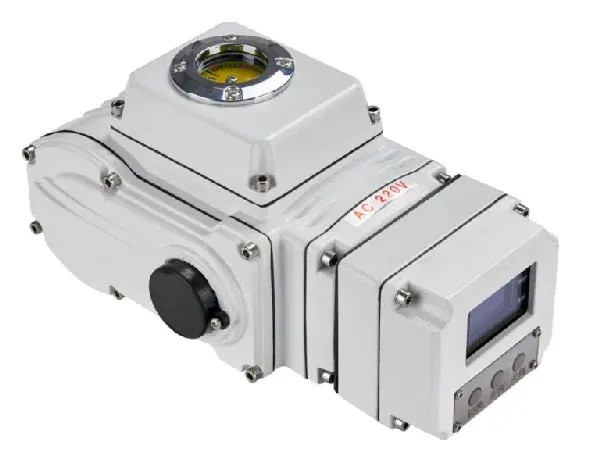Introduction
We Are a Premier Control Valve Manufacturer in China, Delivering High-Quality Valves and Control Actuators Customized to Meet a Wide Range of Industrial Applications.
Electric actuators are vital mechanical devices that convert electrical energy into kinetic energy, generating either linear or rotary motion. They play a crucial role in automating valves, dampers, and other equipment, significantly improving process efficiency and enabling complex automated operations. The design and function of electric actuators vary widely to suit specific applications, differing in size, shape, and control capabilities.
The demand for electric actuators has surged recently due to the trend toward decentralized automation technology. Modern process controllers can now seamlessly integrate with advanced electric actuators, complying with updated automation standards. Additionally, the integration of failsafe mechanisms allows continued process control during power outages, enhancing safety and reliability.
Despite their sophisticated design, electric actuators can experience failures. Understanding common issues and following effective maintenance practices are essential for maximizing actuator lifespan and performance. This article explores typical failures encountered in electric actuators and outlines practical maintenance strategies to address them.
Common Failures in Electric Actuators
Motor Malfunction
The motor is the heart of the electric actuator. Extended operation or overload conditions may cause the motor to overheat, leading to increased rotor clearance and excessive vibration. These symptoms reduce motor output power and can result in complete motor failure.
Handling:
- Inspect the motor’s power circuit and connection points.
- Replace the motor if damage is irreparable.
Power Failure
Power interruptions can stem from issues like disrupted power lines, poor electrical contacts, or triggered protection devices. These faults stop actuator operation and can cause unexpected downtime.
Handling:
- Check for short circuits or open circuits in power lines.
- Clean electrical contacts.
- Reset any tripped protection mechanisms.
Transmission Part Malfunction
Components such as hoses, connecting rods, and fittings within the transmission system can wear out or loosen over time, impairing actuator function.
Handling:
- Disassemble the actuator for inspection.
- Repair or replace damaged or loose transmission parts.
Mechanical Failure
Mechanical issues may arise from internal component damage or external vibrations, requiring thorough diagnostics.
Handling:
- Perform a comprehensive system analysis.
- Repair or replace faulty components and mitigate vibration sources.
Indicator Light Malfunction
Non-functional power indicator lights often signal blown fuses or power supply issues on the servo board.
Handling:
- Check and replace fuses or indicator lights as necessary.
Resistance and Capacitance Fault
Faulty resistors or capacitors can cause the actuator to malfunction upon power-up, affecting electrical performance.
Handling:
- Test these components with appropriate diagnostic tools.
- Replace defective resistors or capacitors.
Maintenance Strategies for Electric Actuators
Proper maintenance is key to preventing failures and ensuring long-term reliable operation. Consider the following best practices:
Routine Inspections
Regularly check motors, transmission parts, electrical connections, and seals for signs of wear, corrosion, or damage.
Lubrication
Apply recommended lubricants to moving parts to reduce friction and wear, following manufacturer guidelines on frequency and type.
Cleaning
Keep the actuator and its environment free from dust, debris, and contaminants, especially around electrical contacts and connectors.
Temperature Monitoring
Monitor operating temperatures to avoid overheating and ensure the actuator runs within specified limits.
Electrical Testing
Periodically test resistors, capacitors, fuses, and wiring to confirm they function correctly; replace components showing deterioration.
Calibration
Perform regular calibration to maintain accurate valve or damper positioning, critical for precision control applications.
Software Updates
For actuators with programmable controllers, keep firmware and software updated to benefit from performance improvements and bug fixes.
Operator Training
Ensure operators and maintenance staff are trained on actuator functions and maintenance needs to identify and address issues promptly.
Documentation
Maintain detailed logs of inspections, repairs, replacements, and calibrations to track performance and detect recurring problems.
Emergency Preparedness
Develop a contingency plan outlining failure diagnosis, spare part sourcing, and procedures to minimize operational downtime.
Conclusion
Electric actuators are indispensable in modern automation systems, providing enhanced precision, efficiency, and safety. However, they are subject to mechanical and electrical failures that can disrupt processes. By understanding common failure modes and adopting a structured maintenance program—including regular inspections, lubrication, electrical testing, calibration, and training—users can maximize actuator reliability and lifespan.
With proper care, electric actuators will continue to support advanced automation, ensuring smooth, safe, and efficient system operation.Know more about Google SEO Directory





Comments